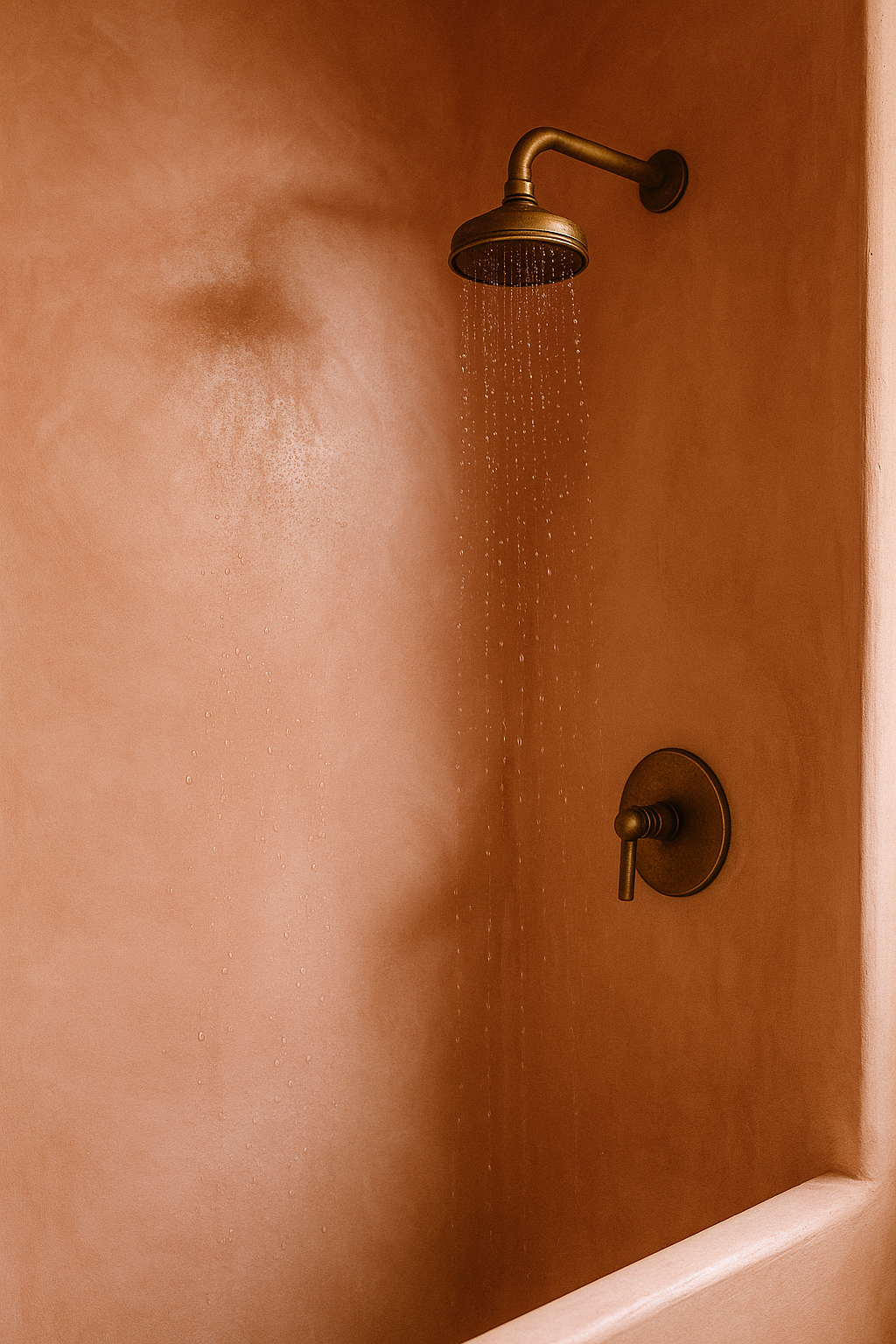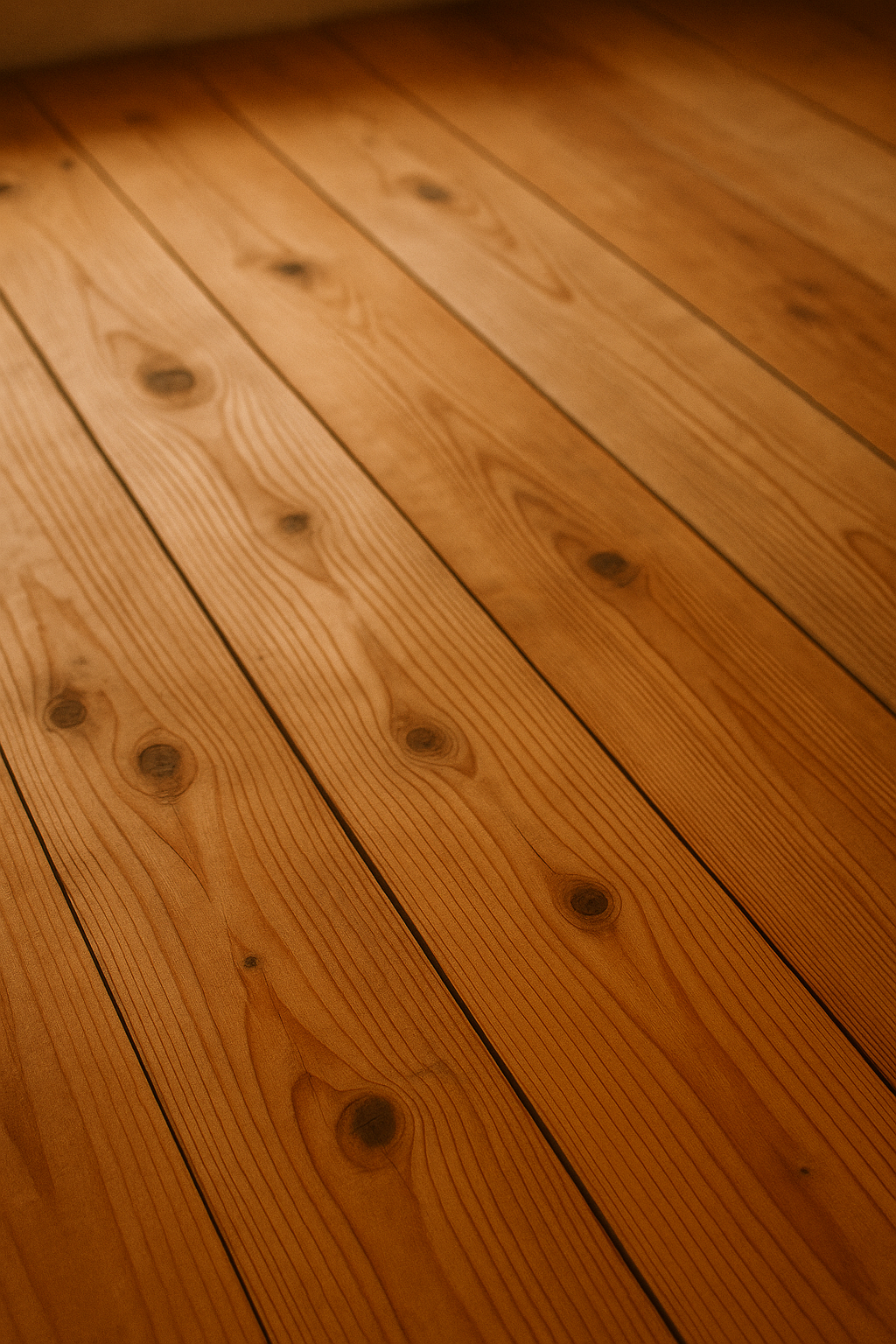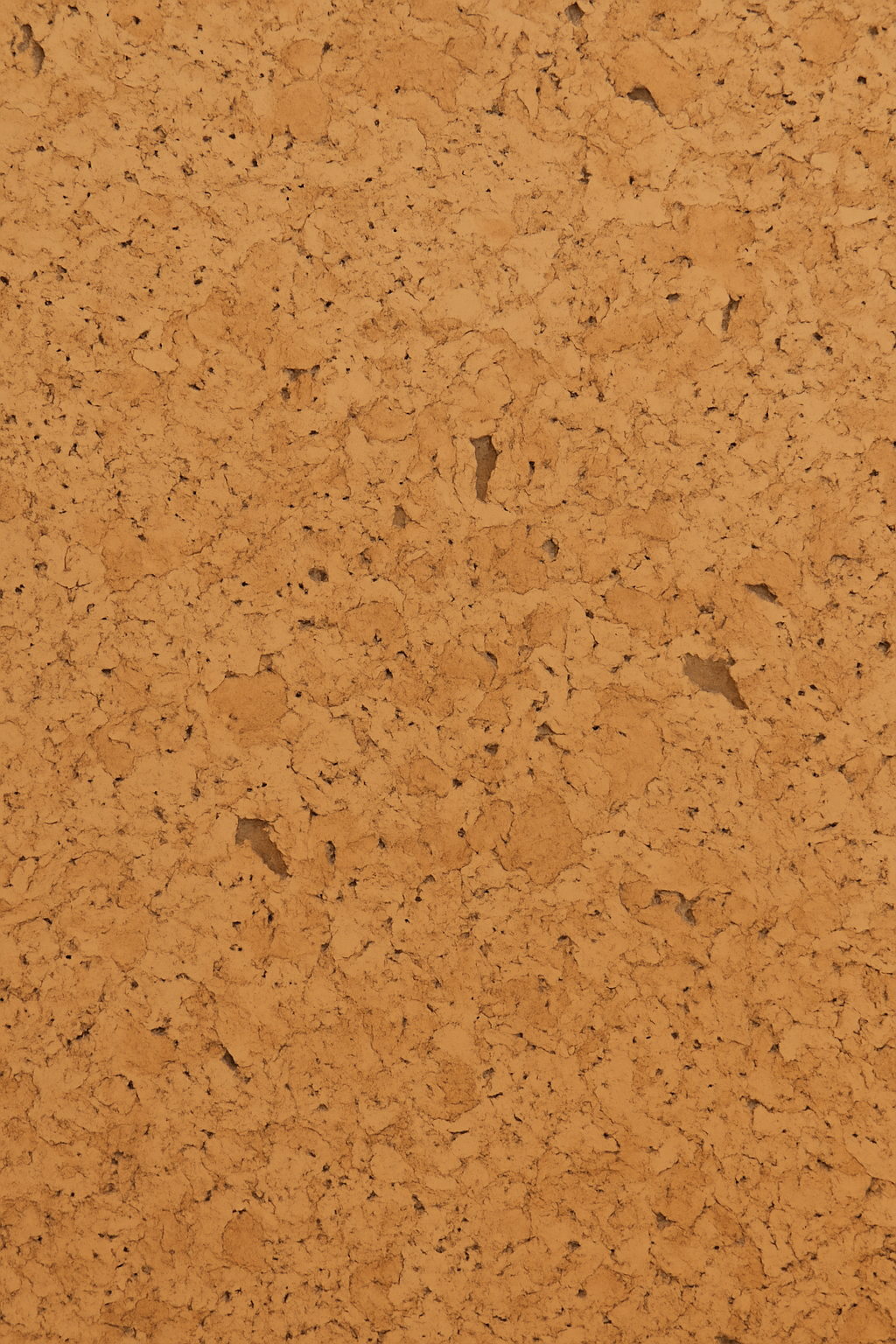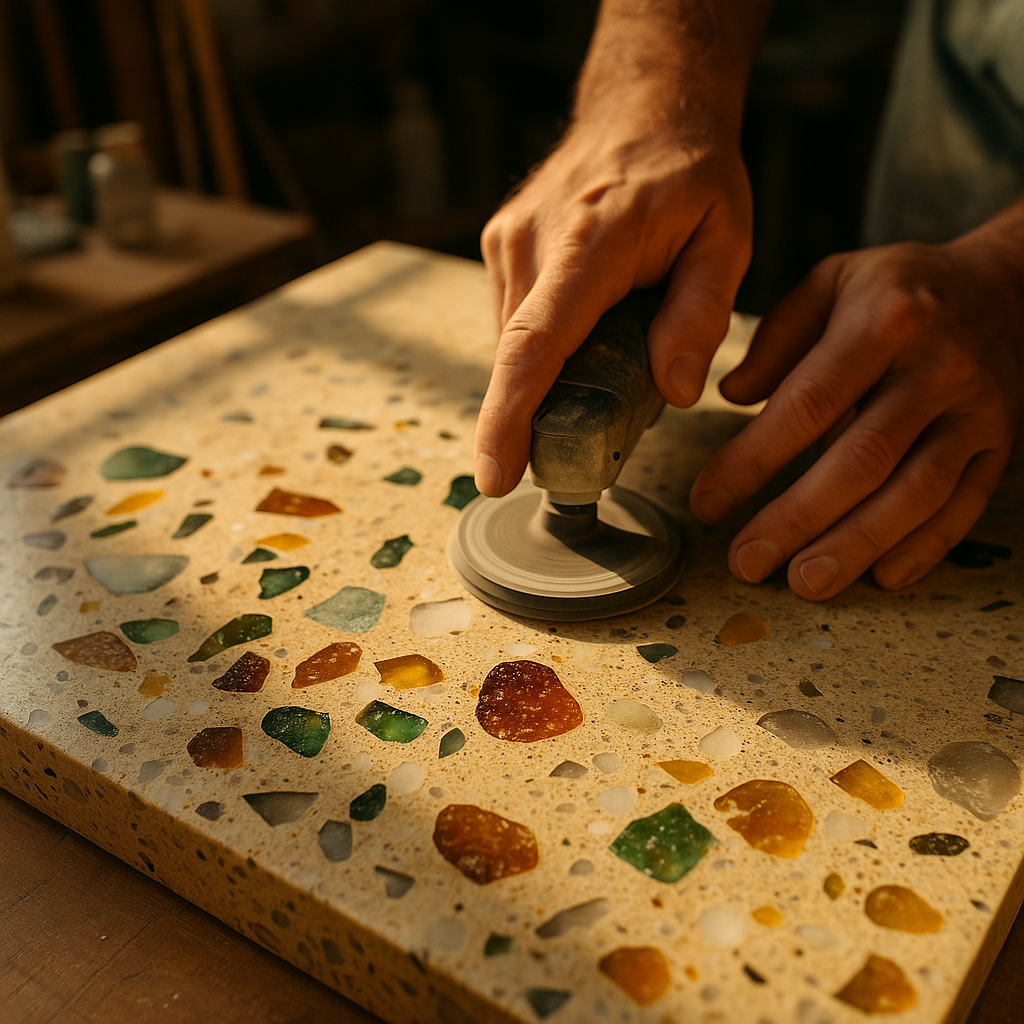"New Mediterranean" Interiors — Six sustainable materials that let the house live
by Isabelle Martens
1. Limewash — lime mist that moves with light

Yiannis paints a first stroke across the wall and I see how the color pulls
toward melted butter before it dries to powdery sand. Limewash consists of
slaked lime, water and mineral pigment — zero VOC, completely compostable
the day the wall needs to change color. Moisture in the room travels through the surface instead
of getting trapped behind a plastic film; walls regulate climate like a pair
of quiet lungs. When evening sun falls low, the brush strokes shimmer like satin,
and the morning after, the nuances are a tone cooler — as if the house
wakes and sleeps with me.
2. Tadelakt — Moroccan silk stone that loves water
In the bathroom I knock with my knuckles on the pink surface; it feels hard
as Carrara marble but almost smooth as a peach. Tadelakt is lime plaster
polished with olive soap until pores close — completely waterproof without joints,
without mold, and with an infinite color scale that comes from natural
pigments rather than plastic. Moroccan craftsmen say the technique
is "stone that became skin," and I understand them only when the shower stream hits
the wall and drops glide off like mercury.
3. FSC-certified cypress — wood that smells of citrus & patience

We lift in planks that have been drying for thirteen months. Cypress grows
slowly, binds carbon dioxide for a long time and — if FSC-marked — is replaced
with newly planted forest. In Mediterranean climate it hardly swells at all: no
splitting, no creaking floorboards. When I plane the first length,
a faint scent of citrus and resin spreads that will linger
in the bedroom longer than any artificial oil.
4. Cork — springy bark that grows back
In the workshop they roll out planks of pressed cork; the surface is warm against
bare feet even before floor heating is turned on. Oak bark is harvested
every ninth year without felling the tree, and each peeling makes the tree
bind up to five times more carbon dioxide during the healing period. The sound
of glasses being set down is dampened to a pleasant "knock" instead of
"clink" — as if the house installed its own sound mat.

5. Reclaimed terrazzo — marble crumbs that got a second life
In the kitchen we pour a mixture of crushed wine bottles, worn-out
marble slabs and liquid binder into the mold for new countertops.
Terrazzo originated when Italian stone cutters salvaged waste from
the quarry and laid it in cement — recycling before the word existed. Today
the same mosaic is created from bio-binders and recycled fragments; the market
is expected to grow to 43 billion USD by 2033, driven by designers chasing
circular surface materials. When we polish the surface, green and amber-
colored pieces emerge like confetti in crème fraîche.
6. Linen & hemp — textiles with light backpacks
I pull the curtain and it falls in heavy but airy folds. Linen requires
up to 60% less water than cotton; hemp even less and often manages
on rainwater alone. A fresh LCA study shows that hemp fiber has lower
climate footprint and eutrophication than cotton in almost all categories.
When sun filters through the unbleached weave, the room gets a butter-caramel shimmer
that neither polyester nor bleached cotton can recreate.
Fact Box — Six materials, six strengths
Material Key advantage Unique for New Med Lifespan

Limewash Moisture regulating, 0 VOC Shifts with light 20+ years
Tadelakt Jointless, completely waterproof Spa feeling in bathroom 30+ years
FSC-cypress Low maintenance, scent Handles moisture & heat swings 50+ years
Cork Carbon-positive Sound dampening & softness 25+ years
Reclaimed terrazzo Circular waste → luxury Custom color mix 50+ years
Linen/hemp Water-efficient, breathes Filtered light, soft patina 10–15 years
When evening breeze sweeps through lime-plastered vaults, steps are dampened by cork
and linen curtains dance for a second before becoming still. That's when I know
that New Mediterranean is not a style, but a microclimate of materials
that collaborate — for you, for the house and for the landscape that surrounds
us both. Next time I follow the ceramicists in Paphos who let the sun
fire their kilns. See you among the pottery wheels!
# Image (4:3) Alt-text ≤ 125 characters
1 Limewash wall (painting) Craftsman brushes butter-yellow limewash on wall in sun-lit vault room, powdery surface shimmers in afternoon light.
2 Tadelakt shower Blush-pink tadelakt niche with antique brass shower; water pearls roll over silky, seamless surface.
3 FSC-cypress floor Close-up of golden cypress floor; grain and knots visible in soft, warm side light.
4 Cork structure Macro of honey-brown cork surface; pores and cracks create lively, natural texture.
5 Reclaimed terrazzo Craftsman polishes terrazzo slab filled with green and amber glass and marble pieces in creamy base.
Isabelle Martens
Art historian from the Sorbonne who became a lifestyle journalist. Former contributor to Condé Nast Traveller, now a freelance writer specializing in slow luxury travel in the Mediterranean. Lives between Antwerp and Cyprus.
"Slow luxury isn't golden taps – it's having time to talk with the winemaker before buying the bottle."
